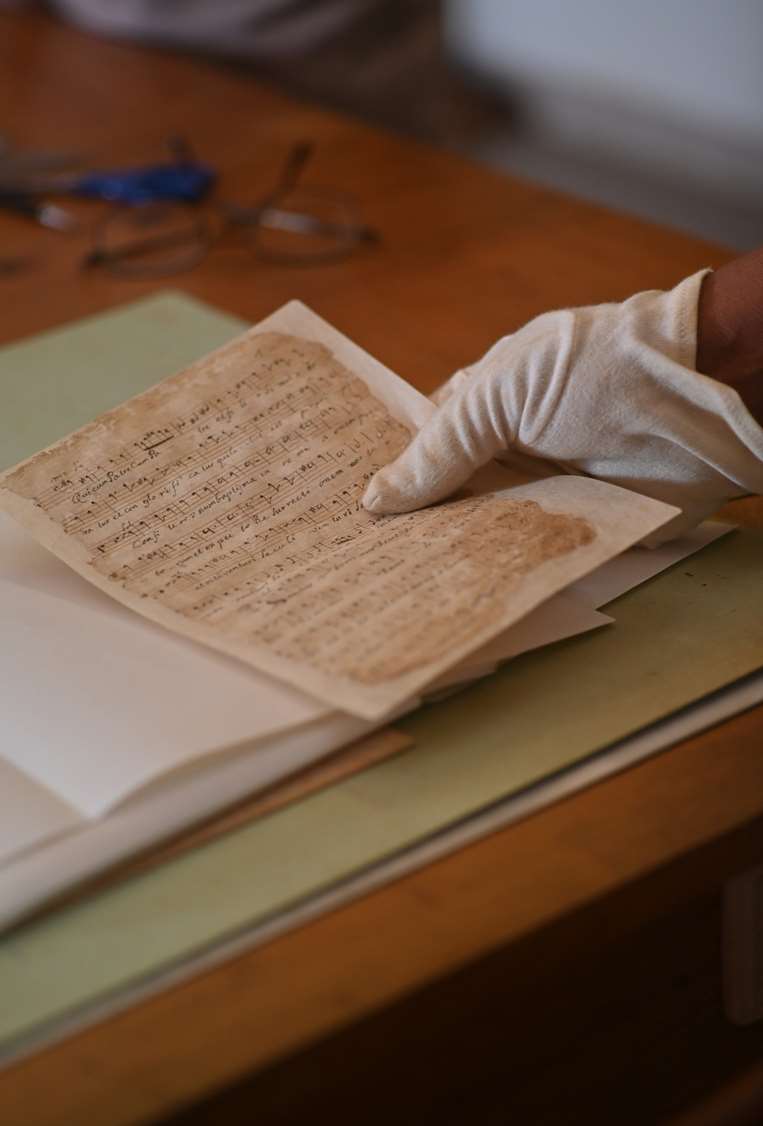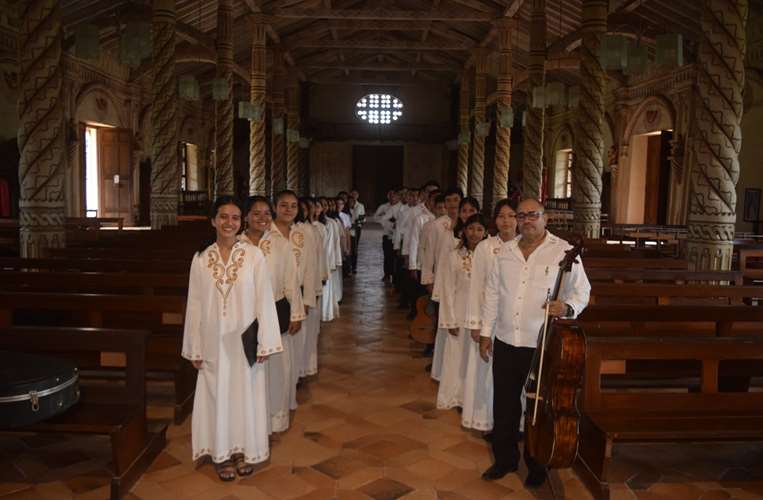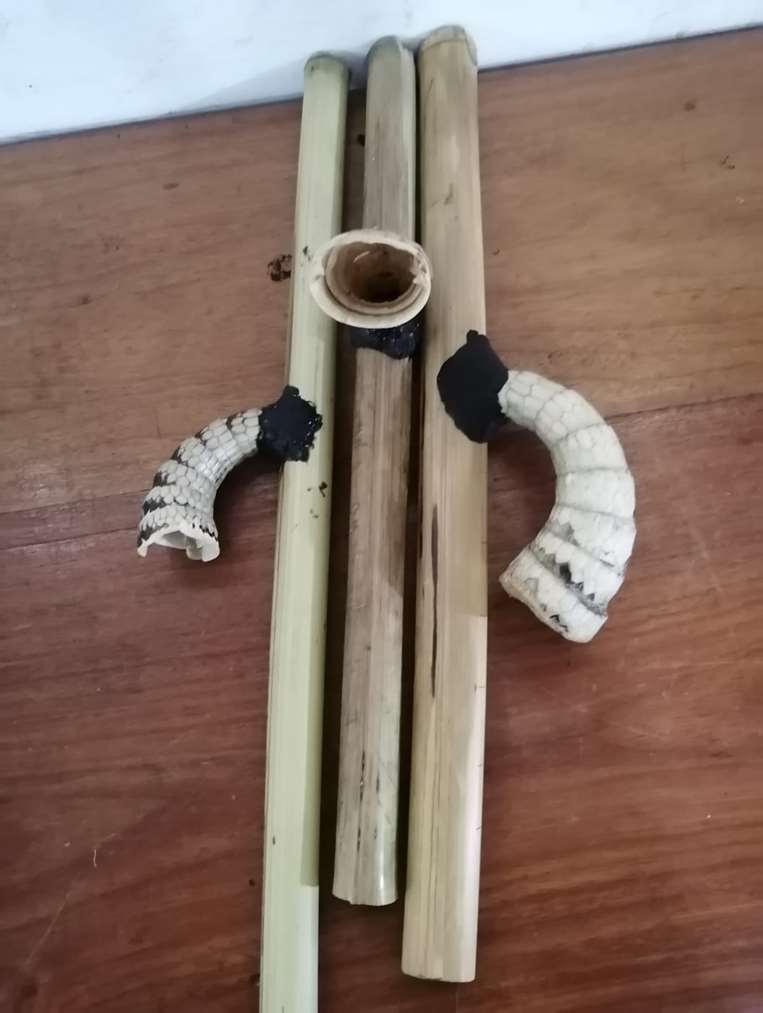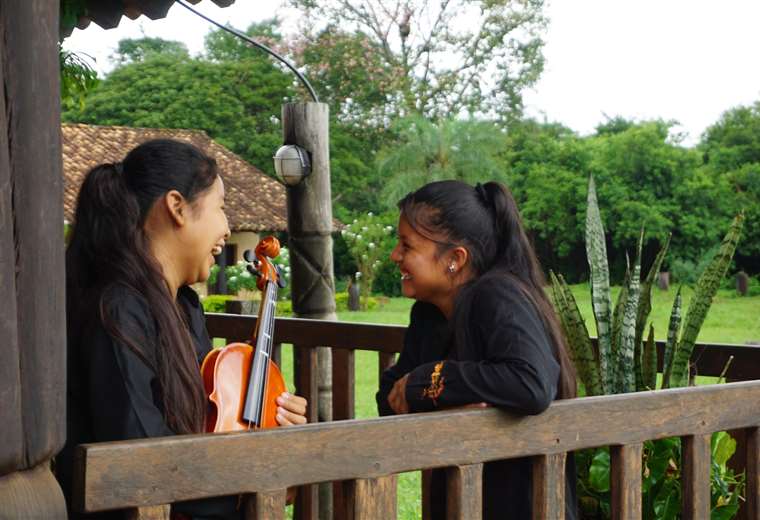April 19, 2024, 8:25 AM
April 19, 2024, 8:25 AM
Rehearsal of the International Festival of Renaissance and American Baroque Music Misiones de Chiquitos / APAC Facebook
In the lowlands of Bolivian East which were part of the Jesuit reductions of the 17th century, at dusk, The towns were left without electricity, they lit candles and started making music. This is how they killed time because there weren’t many things to do.
The people who used to dedicate themselves to agriculture and work on local farms were also very party-goers. Music was and is part of his DNAon their bones are tattooed the melodies of instruments that already existed before the arrival of the Jesuits to Chiquitania: whistles, pumpkin rattles and fruit shell anklets, among others.
Today violins, cellos and double basses that arrived with the Spanish are perhaps the star instruments of the missionary baroque music that we enjoy in each version of the wonderful International Festival of Renaissance and American Baroque Music Misiones de Chiquitossoon to be inaugurated (this Friday, April 19), but there are other native instruments that they didn’t touch again and the memory lost track of when they were used and even how they sounded.
According to descriptions printed in “Musical Instruments of the Chiquitanos”, by Edgardo Civallero, the priests of the time gave an account of the indigenous customs and said that they were societies where music played a very important role. “The day was inaugurated with music until the sun had dried the dew, and at sunset, the majority retired to rest, but the young They spent a good part of the night dancing to the sound of the instruments“; and they had the wonderful gift of expressing themselves through music.
String instruments are baroque, they were introduced by Jesuit missionaries, but this year, in the XIV version of the festival there will be a surprise: a group of native instruments has been rescuedwhich went from being on display to being held in the hands of the young students and members of the San Xavier Choir and Orchestra (founded in 2003).
“We have revived to revalue them after 300 years“, enthusiastically confesses Eduardo Silveira, the Cuban director who lived in Bolivia years ago, where he first fell in love with the culture of the Jesuit Missions and then with his wife, Carla. From that union three Bolivian children emerged, with the same strong musical impression tattooed in the bones.
The presentations will be on April 23 and 24 of the only opera written in Bésiro (native language) in the world, with the ancestral instruments: secu secu, sananá and yaseromanka, among others.
It is a anonymous work edited by Father Piotr Nawrot (artistic director of the festival), who dates back to 1740, approximately. It is an opera (a musical dramatic work whose text is sung with orchestra accompaniment) that lasts about 40 to 45 minutes.
It has singing and dancing. In the words of its musical director, it is a festive opera: “they were very festive people here, even at mass there was happy music,” he highlights.
According to director Silveira’s research, these little-known instruments were used in celebrations and it is not certain if they were also used in masses. And the Chiquitano musical groups used to play in the church, where sublime liturgical texts were interpreted and on the other hand, at parties in private homes and in town halls.
The scarce bibliography indicates that they were interpreted individually and on very few occasions, such as the All Saints’ Day (November 1), in the of the Immaculate Conception (8 of December), and sometimes at the end of the year. It is also believed that the indigenous people performed this opera when visitors arrived.

The rescue of native instruments
“Are ancestral instrumentswhat I have done is revive them, value them, it is known that they were touched, but History does not know when they were used about 300 years ago, and taking advantage of the work of the San Francisco Xavier opera, I was given the opportunity to record them,” explains Silveira.
He justifies that he has always looked for the most genuine that was used years before the arrival of the Jesuits and during these missions. “The instruments were here, but they are not used. If I knew the adventures of trying to get new generations to know this instrument,” he says, pointing out he sananá, made with tacuara and tatú tailwhich acts as a bugle.
To give them life, he went to unique luthier (person who builds, restores, repairs and adjusts instruments) in San Javier, a skilled man who is 70 or so years old.

Intense rehearsals
The intensive rehearsals began on January 6, when they received the score of the opera from the father Piotr Nawrot. At the end of that same month, the Pole, responsible for ensuring that the music of the Chiquitos Missions does not burn out in the humidity of a drawer and that the world can admire it, gave the first audition. “I wanted to see if we could handle the opera, and well, luckily we were able to and since then we have been working,” says Silveira, referring to him and 35 smiling boys between 12 and 16 years old.
What is this opera going to sound like with these instruments? What sensations does it transmit? “It’s something delicious,” Silveira is quick to say, justifying that this is only experienced and manifested in the towns, with their local orchestras.
When the Renaissance and Baroque Music Festival began in 1996 there was only one orchestra. Currently there are more than 40, each town has its own.
The rescued instruments that will be played at the Festival:
 Sanana, wind instrument made of tacuara and that includes a tatú tail
Sanana, wind instrument made of tacuara and that includes a tatú tail







